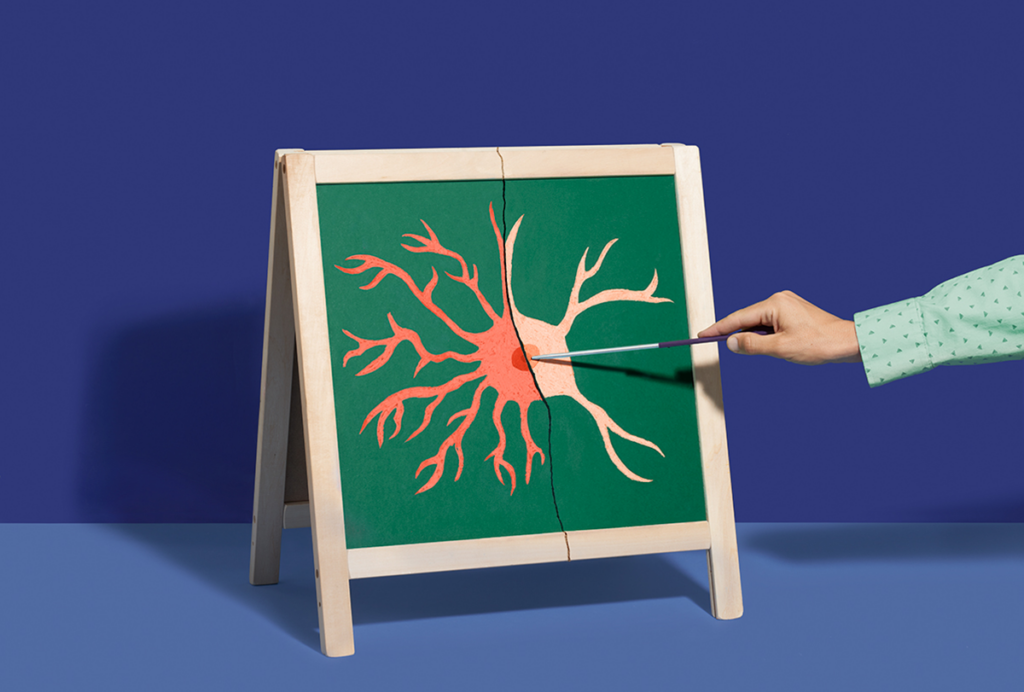Males and females show different patterns of risk for brain-based conditions. Ignoring these differences does us all a disservice.
Although studying sex differences in the brain is complex, technically awkward and socioculturally loaded, it is absolutely essential.

Human males and females show profound differences in the prevalence and presentation of numerous brain-related conditions. In neurology, for example, males have a greater risk of Parkinson’s disease and tend to develop the disease earlier and with more severe cognitive impairments. Females have higher rates of multiple sclerosis, but their symptoms progress more slowly than in males. In psychiatry, all early-onset neurodevelopmental conditions are more prevalent in males than in females. But during adolescence, females have a higher risk of developing mood and anxiety disorders.
The fact that these differences are age-dependent, reproducible across cultures and linked to biological correlates—differences in gene expression and brain imaging, for example—indicates that they aren’t simply the result of gendered interactions with health-care systems. Indeed, this differential disease vulnerability in males and females emerges during periods of life in which the brain is particularly dynamic, suggesting that sex differences in brain organization may shape disease risk in a developmentally dynamic manner. Failing to test this hypothesis hinders personalized medicine and—given that women tend to be excluded from biomedical research—harms women’s health.
Unfortunately, deciphering these sex differences can be challenging, for both scientific and sociological reasons. Here, I reflect on some of these challenges and outline the best way to proceed—through careful observation and evaluation of experimental evidence, rigorous awareness of potential bias and thoughtful communication of results.
T
he human brain is simultaneously one of the most complex structures in the known universe and one of the most difficult biological systems to directly measure and manipulate. Neuroimaging is currently the most effective way to measure brain structure and function in living people. Though the resolution of brain-scanning technology continues to improve, the smallest unit of measurement is still 1,000 times larger than a single neuron, limiting our understanding of sex differences in brain structure and function. For instance, large neuroimaging studies of more than 30,000 people show reproducible sex differences in regional brain anatomy, but we don’t yet understand the cellular or molecular bases of these differences. Also, different neuroimaging methods don’t always yield the same results, and our inability to directly access the brain makes it hard to determine why.Observing a sex difference in the brain by way of neuroimaging, such as a difference in the mean volume of a given brain region, raises many questions. Are the differences due to chromosomes, hormones, environmental influences or a combination of the three? Do they mediate sex differences in behavior or disease vulnerability, or are they irrelevant? This latter question often takes center stage when findings move from the scientific to the public arena. The only way to definitively answer such questions is through experimentation, but ethical and logistical challenges make such experiments difficult in people. And animal studies are not always applicable to people.
Complicating matters is the fact that information on brain sex differences has a history of being misrepresented and used to support sexist agendas, raising another question: If we can’t measure or mechanistically test the human brain with absolute certainly, should we just not pursue studies of sex differences? Some fear that lack of certainty makes it easier for people to project their own biases, reading the complex and sometimes ambiguous outputs of scientific research like tea leaves that describe a desired reality about where sex differences in the brain either do or don’t exist, or do or don’t affect behavior. But neither abandoning the study of sex differences in the human brain nor letting ideology guide our conclusions helps us answer pressing questions about numerous neurological and psychiatric outcomes.
Rather than avoiding this type of research, our best path forward is to proceed with caution and humility, using the flawed tools we have. Two crucial guide rails can steady our journey: close adherence to the scientific method and a proactive stance against bias.
The scientific method offers a well-proven scaffold to help us find a path through difficult terrain. It has helped us define and treat the causes of infectious and endocrine diseases, to map and edit the human genome, and to start cataloging all the cell types in our bodies. In all these examples, despite limited tools and a winding path, we have converged on an ever more accurate picture of reality by employing core components of the scientific method: careful observation, open-mindedness, precisely formulated questions, methodological rigor, impartial presentation of results and vigorous debate. The same process can help us research the sex differences in the human brain.
Several practices in particular bear special mention. First, when published findings appear messy and conflicting, such as those concerning sex differences in regional brain anatomy, we need to carefully measure those findings against the quality of the study design. When reviewing the literature and formulating research questions, it is especially important to guard against injecting our own biases.
Second, when conducting new research, we need to adhere to best methodological practices for the specific research field in question, such as using state-of-the-art neuroimaging and statistical tools, and sharing all data and tools where possible to help others more easily query or build on our work.
Third, it is crucial to be as precise and neutral as possible when reporting results, specifying the magnitude and nature of any observed sex differences and giving equal weight to both their absence and presence. Lastly, when interpreting our results, we need to carefully detail all the caveats and limitations that apply, clearly drawing out the boundaries of certainty. It is just as important to clarify what our findings don’t mean as it is to speculate about what they might mean. Speculation has its place, offering new models and ideas for future studies, but we need to be clear when we are speculating and when we are making an inference backed by hard data.
T
he scientific method is powerful, but it does not exist in a sociocultural vacuum and can therefore be subject to bias. This statement can feel uncomfortable to some scientists, because it runs counter to the principle of objectivity that lies at the heart of science. But there is strong evidence that individuals and organizations in science are not immune to society’s biases, and we ignore this fact at our own peril.For example, women are underrepresented in many STEM fields, and a team’s gender composition has been shown to shape its function. Science has an even more severe underrepresentation of gender-diverse individuals, a lack that colors language use, study design and inference. Powerful gender biases persist in how scientists cite and evaluate research: Their appraisal of papers that report sex differences differs depending on both the sex that is “favored”—if males or females show better performance, for example—and the gender of the study authors. More generally, we know that gender biases operate in many domains of professional, private and public life, opening ample space to influence how research on sex differences is disseminated and interpreted.
Countering biases in the generation and consumption of research about sex differences in the human brain will require sustained and multi-pronged efforts at the national, regional, institutional and individual levels. And the structural and implicit nature of many gender biases requires that we adopt a proactive stance rather than just reacting to overt biases. Key elements of this work will include more balanced gender representation in the bodies that fund, support and execute science; expanded access to high-quality, evidence-based training on gender biases across all levels of the scientific endeavor; and careful selection and definition of the terms we use to communicate research findings, especially when we are collaborating with media outlets that connect with large, non-specialist audiences.
There are risks in trying to study something as complex, technically awkward and socioculturally loaded as sex differences in the human brain. Yet as daunting as these risks are, they are dwarfed by those that would come from avoiding, muzzling or willfully distorting that research. Doing so diminishes our understanding of the natural world and hinders equitable access to the benefits of biomedical research in ways that would—with the cruelest irony—disproportionately harm those very groups that are already at the greatest risk of gender-based discrimination.
This work was written outside of the author’s role as a government employee and does not necessarily reflect the views of the U.S. National Institute of Mental Health.
Editor’s note
Recommended reading

What birds can teach us about the ‘biological truth’ of sex

Revisiting sex and gender in the brain
Explore more from The Transmitter

INSAR takes ‘intentional break’ from annual summer webinar series


